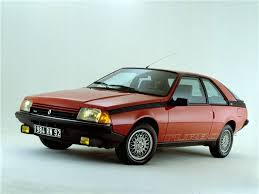


This edition of the Lotus Excel SA 2.2 16v is the 4 speed / Auto version and was first brought out in 1986. This was at around the same time as the introduction of the 1987 Porsche 959 Turbo and the 1987 Ferrari F40 2.9 V8.This particular Lotus Excel has a 2174cc Naturally Aspirated Petrol powerplant with 4 cylinders in a St formation.
The Excel shares its Petrol St4 engine configuration with the likes of the 2019 Ariel Atom 4 2.0 Turbo and the 2013 Caterham 7 620 R 2.0 L Supercharged. If you're looking for other fast cars which share the Excel's Rear Wheel Drive, Coupe combination then how about the 1982 Fiat X1/9 1.5 8V or the 1965 Aston-Martin DB6 1965.
Weighing in at 1177 kgs (2594 lbs) this makes the Lotus Excel SA 2.2 16v in the same weight category as the 2018 McLaren Senna 4.0 V8 Twin Turbo or the give or take 50kg.
In terms of power the 2174cc 16V St4 engine produces 180 bhp (134 kW) @ 6500 rpm similar to the 2020 Abarth 695 70th Anniversario 1.4 Turbo (177 bhp) or the 2020 Audi A1 Sportback 40 TFSI S tronic S line (197 bhp).
The Naturally Aspirated St4 throws out 165 lb-ft (223.7 Nm) @ 5000 rpm placing it with cars of similar torque performance figures such as the 2022 Mini Cooper Countryman John Cooper Works 1.5 Turbo (162 lb-ft) or the 2020 Abarth 695 70th Anniversario 1.4 Turbo (184 lb-ft).
If one combines the weight with power or torque performance for the Lotus Excel you can get a better idea of it's real world performance.
The Lotus Excel has a Power to weight ratio of 152.9 bhp per ton and 140.1 lb-ft per ton. Bhp Per Ton figures of the 1986 Excel competing with the 1976 Ferrari 400 GTS (177.8 bhp per ton) or the 1993 Subaru Impreza WRX - Classic JDM Wagon (177.8 bhp per ton).
If you agree with the late great Carroll Shelby then arguably an even better indicator of potential performance, Torque. Use weight as well and you end up with - Torque per ton, with the Lotus Excel generating around 140.1 lb-ft per ton. If you're curious as to what other cars have as much torque to weight then look no further than the 1995 Fiat Coupe 2.0 16V Turbo (165.1 lb-ft per ton) or the 2013 Lexus RC 350 3.5 V6 (165.1 lb-ft per ton).
With a 0-60mph time of 8.20 secs or a 0-100km/h (0-62mph) of 8.5 secs, this made the Lotus Excel SA 2.2 16v as fast as the 2006 Seat Leon 2.0 16v TDI FR (8.20 secs) the 2005 Land-Rover Range Rover 4.4 V8 (8.20 secs) the 2003 BMW X5 3.0d (8.20 secs) the or the 2000 Honda Civic 2.0i VTEC Type S (8.20 secs). This Lotus Excel SA 2.2 16v is also faster than the 2007 Renault Megane Renaultsport 2.0 dCi 175 (8.30 secs) the 2005 Peugeot 407 3.0 V6 Coupe (8.30 secs) the 2005 Mazda MX5 1.8i (8.30 secs) the and the 2001 Volkswagen-VW Lupo 1.6 GTi (8.30 secs).
When talking about the performance of the Lotus Excel on the drag strip it can reach a quarter mile in an estimated 15.53 secs @ 88.1 mph. Similar performance down the quarter mile can be found with the the 1989 Porsche 944 Turbo (15.47 secs), the 2001 Ford Mustang 4th Gen Bullitt GT (15.47 secs), and the 1971 Pontiac Tempest GT-37 6.6 V8 (15.48 secs).
Modern performance cars are often artificially restricted to 155mph. The 1986 version of the Lotus Excel SA 2.2 16v has a maximum speed of 124mph.
If maxing out your car on the AutoBahn is your thing and you're wondering what's faster than the 1986 Lotus Excel SA 2.2 16v then how about the 2020 Toyota Avalon TRD 3.5 V6 (135 mph), the 2020 Toyota Camry TRD 3.5 V6 (135 mph), or the 2018 Abarth 595 Turismo 1.4 Turbo (135 mph).










Mercedes SL Class 65 AMG V12 R230
Engine: Twin Turbo Petrol | 5980cc 36v V12
Top Speed: 155 mph
0-60mph: 3.90 seconds

Maserati Quattroporte S Q4 3.0 V6 Biturbo
Engine: Twin Turbo Petrol | 2979cc 24v V6
Top Speed: 286.4 kph
0-100kph: 4.9 seconds



















